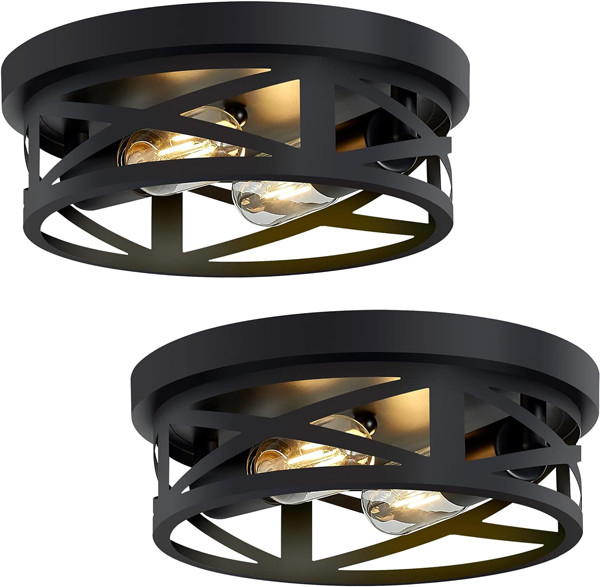
Lighting is a fundamental aspect of interior design that can significantly influence the ambiance, functionality, and aesthetics of your living space. Whether you’re renovating, redecorating, or moving into a new home, selecting the right lighting fixtures is essential for creating a welcoming and comfortable environment. How to choose lighting for your home? This comprehensive guide will walk you through the essential factors to consider when choosing lighting for your home, ensuring that every room shines with style and functionality.
Assess Your Needs and Preferences
Before diving into the world of lighting fixtures, take some time to assess your needs and preferences. Consider the activities that take place in each room, the mood you want to evoke, and any specific lighting requirements. For instance, a kitchen may benefit from bright task lighting, while a bedroom may require softer, more ambient lighting for relaxation.
Understand Different Types of Lighting
There are three primary types of lighting: ambient, task, and accent. Ambient lighting provides overall illumination and sets the tone for the room. Task lighting is focused on specific activities like reading or cooking, while accent lighting highlights architectural features or artwork. Understanding these distinctions will help you choose the right combination of lighting for each space in your home.
Layer Your Lighting
A well-lit room incorporates all three types of lighting to create depth and versatility. By layering different lighting sources, you can easily adjust the ambiance to suit various activities and moods. For example, a living room may feature recessed ambient lighting, a floor lamp for task lighting, and wall sconces for accent lighting.
Consider the Scale and Proportion: When selecting lighting fixtures, consider the scale and proportion of the room. A small pendant light may get lost in a large foyer, while an oversized chandelier can overwhelm a compact dining area. Aim to strike a balance between the size of the fixture and the space it will illuminate to ensure visual harmony.
Pay Attention to Color Temperature
The color temperature of light can have a significant impact on the atmosphere of a room. Warm white light (2700K-3000K) creates a cozy and inviting ambiance, ideal for living rooms and bedrooms. Cool white light (3500K-4100K) is energizing and well-suited for task-oriented spaces like kitchens and home offices. Experiment with different color temperatures to find the perfect balance for each room.
Choose Energy-Efficient Options
Opting for energy-efficient lighting not only reduces your carbon footprint but also saves you money in the long run. LED bulbs consume significantly less energy than traditional incandescent bulbs and have a much longer lifespan. Look for lighting fixtures and bulbs with the ENERGY STAR label to ensure optimal efficiency without sacrificing quality or style.
Don’t Forget Dimmers and Controls
Installing dimmer switches and lighting controls gives you the flexibility to adjust the brightness and mood of your lighting scheme with ease. Dimmers allow you to tailor the light levels to different activities, whether you’re hosting a dinner party or enjoying a quiet evening at home. Additionally, consider smart lighting systems that can be controlled remotely via smartphone or voice commands for ultimate convenience.
Coordinate Styles and Finishes
Lighting fixtures should complement the overall style and decor of your home. Whether your aesthetic is modern, traditional, or eclectic, choose fixtures that harmonize with existing furnishings and architectural elements. Pay attention to finishes such as brushed nickel, oil-rubbed bronze, or matte black to ensure cohesive design throughout your space.
Think Beyond Ceiling Lights
While overhead lighting is essential, don’t overlook the importance of floor lamps, table lamps, and wall sconces for adding depth and visual interest to your home. These portable fixtures can be strategically placed to enhance ambiance, provide task lighting, or highlight specific areas of the room. Experiment with different combinations to create a dynamic and inviting atmosphere.
Seek Professional Advice if Needed
If you’re feeling overwhelmed or unsure about selecting lighting for your home, don’t hesitate to seek professional advice. Interior designers, lighting consultants, and home improvement experts can offer valuable insights and recommendations based on your specific needs and budget. With their expertise, you can make informed decisions that enhance the beauty and functionality of your living space.
Conclusion: How To Choose Lighting For Your Home
Choosing the right lighting for your home is a multifaceted process that requires careful consideration of various factors. By assessing your needs, understanding different types of lighting, and paying attention to details like scale, color temperature, and energy efficiency, you can create a well-lit and inviting environment that reflects your personal style and enhances your quality of life. With the tips and guidelines provided in this complete guide, illuminating your home has never been easier or more enjoyable.
 WOWOW Faucets
WOWOW Faucets






您好!Please sign in